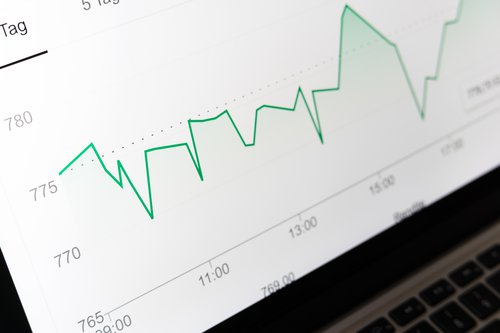
In the world of energy efficiency and sustainability, we very rarely make decisions based on data. In a sector filled with experts and specialists, most decisions are made on gut feel and intuition. You may think because you use data in your decision-making process that you’re data-driven. But that’s not the same thing.
Being truly data-driven means putting data at the heart of the decision-making process. It really comes down to a ‘data first’ approach instead of going by gut feel. It means constantly questioning your beliefs and assumptions to form new mental models. Referring back to the data time and time again and continually asking “Why?”.
Create a metering and data strategy
You can’t become data-driven if you don’t have the data in the first place. I’m sure you’re tired of hearing “you can’t manage what you can’t measure”, but it’s so true.
In energy, we tend to do things the wrong way round. We get to the point of project approval but we’re asked to provide some more certainty. We end up scrambling around looking for historic consumption data to back up our, let’s be honest, pretty crude estimations.
The problem is you can’t retrospectively measure energy usage. If the metering isn’t in place, the data is effectively lost. Or more accurately, never existed. Sure, you can take your monthly meter readings. But everything in between, the stuff that matters, is gone forever.
The first step of any initiative should be to install the required level of metering to measure energy consumption. The energy data collection industry can be extremely difficult to navigate. So understanding what data you need, how you’re going to measure it and where it’s going to be stored is crucial.
It can be costly and time-consuming to flood your portfolio with sub-meters, IoT devices and other various sensors that may never be used. It’s therefore important to review your data and metering periodically at various stages on your journey.
The first issue to address is your overall data coverage. Ask yourself the question, “what proportion of my total portfolio energy usage is covered by reliable, automatic and high-resolution metering?”. In the age of the smart meter, aiming for 90% coverage at half-hourly resolution data available on at least a monthly basis seems a good starting point.
Once you have your metering sorted, you’ll need a place to store and manage the incoming data. Energy data can be extremely inconsistent. So having access to a platform that can manage independent data sources and track overall data quality is essential.
Identify your core energy drivers

Energy use in buildings is complex and highly variable. With this in mind, it’s important to normalise energy use by variables that influence usage.
Far too often you find a standardised ‘consumption per square meter of floor space’ metric used to rank building performance. At times this is useful but only when floor area is the most influential energy driver.
Spend the time to bring in all readily available variables to use in your analysis. Sometimes it’s the most unlikely metrics that play a big role in the variability of performance across your portfolio.
Start by considering static metrics such as building type, size and age or even heating system, lighting type and operating hours. Then move onto dynamic metrics that you’ll need to add over time. These may include daily occupancy, production output, sales figures, outside air temperature, local events etc.
Use divergent thinking to come up with as many ideas as possible. Track down available data and then start to refine the list by excluding those that don’t influence energy usage.
Benchmark your portfolio

Benchmarking is a technique used to assess building performance and contextualise energy consumption. Once you have identified your core energy metrics, you can start to analyse how these vary across your portfolio and make comparisons to industry standards.
Energy benchmarking is often oversimplified. There are industry data sets that normalise energy consumption by floor area. Typically available for many industries and a reasonable number of building types.
Online benchmarking tools can be useful as a rule of thumb measurement but shouldn’t be over-relied on. As I mentioned, buildings are complex and performance is influenced by a wide range of factors that generic industry benchmarks don’t consider.
Your best bet is to look internally. Depending on your portfolio, you may need to create clusters of similar sites so that you can compare apples with apples. For example, your out of town retail stores may be mostly influenced by floor areas and changes in outside air temperature. Whereas energy use at your large city-centre high street stores fluctuates with revenue and footfall.
Don’t look at benchmarks as an isolated matric. Analyse changes in performance over time and identify buildings that are trending in the wrong direction. What happened at these sites to alter its performance? What can you learn from good performing buildings and apply to the poorly performing ones?
Set a science-based target
We consider targets to be science-based if they align with what the latest climate science says is necessary to meet the goals of the Paris Agreement, which set out to limit global warming to well-below 2°C.
There’s still some ambiguity around the relationship between SBTs and Net Zero commitments due to some uncertainty around offsetting. But with that put to one side, there’s no escaping the fact that setting science-based targets and becoming Net Zero Carbon are interlinked.
Science-based targets and Net Zero Carbon have become driving factors for a more data-driven approach to energy efficiency. In a sense, they are the ultimate energy efficiency metrics. Before setting a target, organisations must take the time to understand where they are now and what level of decarbonisation is achievable within certain time frames.
Whichever approach you choose, you’ll need to break your main goal into sub-goals that are more conceivable and can be achieved in much shorter time frames. Data will play an important role in this process. An understanding of the finer details of building performance is essential before you begin setting targets.
Track performance over time

Goals, targets and initiatives are meaningless unless you track performance against them over time. Remember all those New Year's resolutions you made that fizzled out by mid-January? Well, the same happens with sustainability and carbon reduction targets time and time again.
Measurement and verification, or M&V, has long been a part of most energy efficiency projects. Particularly when large CAPEX investment is involved, energy managers are required to adhere to the guidelines of IPMVP (International Performance Measurement and Verification Protocol).
M&V is typically carried out for isolated projects within a large program of works. The main objective is to make sure the expected financial saving and return on investment was achieved. This is all well and good, but in the age of Net Zero Carbon, we need a wider lens.
Today, we need to look at the big picture. We must account for the energy use across an entire portfolio of buildings, not isolated projects. It’s no longer about justifying the financial benefit of specific energy conservation measures, but ensuring energy across the board is moving in the right direction.
This is where your data coverage, core energy metrics, benchmarking and target setting come together. Without reliable high-resolution data across your portfolio combined with a solid understanding of building performance, you don’t stand a chance.
If you have any questions or would like some guidance on how to carry out the steps above, please feel free to drop me a message on Linkedin or by email: jon@fabriq.space

